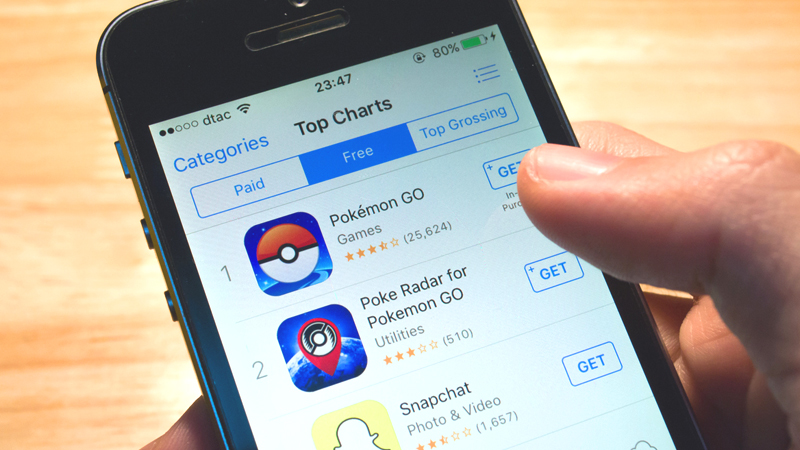APP STORE OPTIMIZATION: BEST PRACTICES TO GET YOUR APP IN FRONT OF THE RIGHT USERS
App Store Optimization is similar to traditional search engine optimization (SEO). Just like in SEO, the goal is to improve rankings in search results and drive conversions. Where app store optimization varies is in the execution of these tactics.
While there are several options for searching and downloading apps, the big two app stores are the Apple App Store and the Google Play Store. Both stores have similar fields in their listings, but there are subtle differences between the two. In general, app store optimization tactics that work in one store will also work in the other.
In order to improve your rankings and drive conversions (and assuming your app is listed in both of the main app stores), you need to focus on four areas:
- Apple App Store Tactics
- Google Play Store Tactics
- Platform Agnostic Tactics
- Web-Based Tactics
APPLE APP STORE OPTIMIZATION TACTICS
APP NAME
- App names should be 30 characters or less
- Include the primary keyword
SUBTITLE
- Subtitles should be 30 characters or less
- Include a strong supporting keyword
KEYWORDS FIELD
- Utilize all 100 characters
- Maximize character count by not repeating keywords already in app name and subtitle
- Use commas to separate keywords
- Avoid using spaces
APP DESCRIPTION
- App descriptions should be 4,000 characters or less
- Use bullet points to list features
- Include best features and a CTA in the first three to five lines of the description
- Call out any media mentions or awards
- Repeat a list of keywords (no more than 10-15 unique keywords) four to five times each
- Readability is important, so avoid keyword stuffing by using the keywords in a natural way
PROMOTIONAL TEXT
- Promotion text should be 170 characters or less
- Mention any new features or promotional offers
ICON
- Icon size should be 1024px x 1024px
- Include a border around the icon
- Avoid using text
SCREENSHOTS
- Utilize all 10 screenshots
- Showcase one feature per screenshot and frame it so the photo shows a phone or tablet with the feature on the screen of the device
- Put your two strongest features as the first two screenshots
- Include a short description at the top of each screenshot
APP PREVIEW
- :15 – :30 length
- Can include up to three per listing
- Showcase your best features
- Use an engaging thumbnail to drive views
GOOGLE PLAY STORE OPTIMIZATION TACTICS
APP NAME
- App names should be 50 characters or less
- Include the primary keyword
SHORT DESCRIPTION
- Subtitles should be 80 characters or less
- Include a strong supporting keyword
LONG DESCRIPTION
- App descriptions should be 4,000 characters or less
- Use bullet points to list features
- Include best features and a CTA in the first three to five lines of the description
- Call out any media mentions or awards
- Repeat a list of keywords (no more than 10–15 unique keywords) four to five times each
- Readability is important, so avoid keyword stuffing by using the keywords in a natural way
ICON
- Icon size should be 512px x 512px
- Include a border around the icon
- Avoid using text
SCREENSHOTS
- Utilize all eight screenshots
- Showcase one feature per screenshot and frame it so the photo shows a phone or tablet with the feature on the screen of the device
- Put your two strongest features as the first two screenshots
- Include a short description at the top of each screenshot
APP PREVIEW
- :30 – 2:00 length
- Showcase your best features
- Use an engaging thumbnail to drive views
PLATFORM AGNOSTIC TACTICS
RATINGS AND REVIEWS
- High average ratings can increase rankings and conversions
- Reply to negative reviews to help resolve customer issues, improving ratings and customer satisfaction
- Use two-step notifications to encourage users to rate and review the app
- Ask family, friends, test users and early adopters to rate the app once it is initially published
UPDATES AND RELEASES
- Update your app frequently to fix bugs and enhance features
- Include notes with each release to alert users and searchers to what’s new
COMPETITOR ANALYSIS
- Monitor competitors to see how their apps are ranking
- Track what keywords competitors are targeting and adjust your strategy accordingly
MARKET ANALYSIS
- Conduct industry research to see what new trends or features are developing
- Adjust keywords for your app to align with new trends
CONTENT INDEXATION
Enable content within your app to be indexable by search engines—This allows searchers to launch directly to content in the app or to the app store listing to download the app from search engine results pages
WEB-BASED TACTICS
DEDICATED PAGE FOR APP
- Create a webpage for your app that lives on your main site and can borrow from your domain authority to help organic search traffic
- Link to both the Apple App Store and Google Play Store listings for your app
- Follow traditional SEO best practices for an app-specific webpage
LINKING TO APP LISTINGS
- Link to app store listings from pages on your site that reference the app or relate to content that is covered in the app
- Request backlinks to your app listings from key opinion leaders and influencers in your industry
DOWNLOAD THE APP STORE OPTIMIZATION CHECKLIST
Download the Apple App Store Optimization Checklist and the Google Play Store Optimization Checklist to quickly reference the tips in this article. Start improving your app store optimization efforts today.



